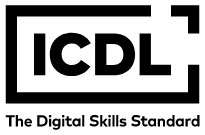AI-Powered Choreography Using a Multilayer Perceptron Model for Music-Driven Dance Generation
Abstract
Dance, as an expressive art form, has developed over centuries, and with the advancement of technology, it is currently undergoing a revolution powered by artificial intelligence. Conventional dance choreography is frequently based on intuition and manual effort, which can be time-consuming and restricted by the dancer's imagination and experience. Artificial Rhythm is a concept that uses AI to evaluate intricate musical trends and rhythms, creating novel dance routines customized to particular beats and patterns. Dancers face difficulties in developing routines for fast, intricate songs. Previous techniques lack dynamic solutions for producing rhythm-matched moves. To automate choreography, a system is required that takes into account skill level, tempo, and rhythm. The purpose of this research is to create an AI-powered tool, DanceMoveAI, that analyzes music beats and rhythms and suggests innovative dance moves based on the song's characteristics. This tool is designed to help dancers create distinctive routines swiftly and effectively by integrating a machine-learning model that can adapt to different musical genres and dancer skill levels. The DanceMoveAI algorithm uses the AI Dance Move Suggestion. Depending on the Beats and Rhythm dataset contains information like beats per minute (BPM), rhythm pattern type, beat consistency, rhythm complexity, and dancer skill level. The dataset is pre-processed using median and mode imputation, label encoding, and min-max normalization. Synthetic Minority Over-sampling Technique (SMOTE) corrects for class imbalance, and feature selection uses Information Gain to find the most impactful features. To predict suggested dance moves, a multilayer perceptron (MLP) model is trained on the dataset after being hyperparameter-tuned using grid search. The model is assessed utilizing a variety of performance metrics. The DanceMoveAI model was compared with Decision Tree, Random Forest, Support Vector Machines (SVM), and Gradient Boosting Machine (GBM) classifiers utilizing numerous performance metrics, and the findings were impressive: Accuracy of 90.3%, Matthews Correlation Coefficient (MCC) of 0.85, Area Under the Receiver Operating Characteristic Curve (AUC-ROC) of 0.91, Cohen’s Kappa of 0.84, and a Log-Loss value of 0.32. These results demonstrate the model's strong capacity to correctly predict dance moves depending on music characteristics, with high consistency across numerous performance measures. DanceMoveAI automates choreography by forecasting movements based on rhythm and beat, allowing dancers to experiment with new ideas. Its precision streamlines creativity, assisting both experts and enthusiasts
Full Text:
PDFDOI: https://doi.org/10.31449/inf.v49i20.8103

This work is licensed under a Creative Commons Attribution 3.0 License.









